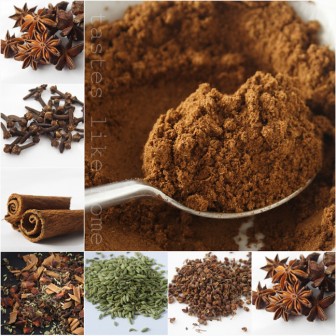Hi Everyone, Every West Indian familiar with Chinese cuisine, refuses to make any of their favourite Chinese dishes without a few sprinklings of Chinese Five-spice powder added to their food.
So ubiquitous has this spice-combo become that some manufacturers (particularly local and regional), don’t even bother to mention that it is Chinese Five-spice powder, it is simply labelled: Chinese Spice and those in the know, know that it’s the Five-spice powder.
In all cuisines, food is not just food. In other words, it is not just something we eat to satisfy our hunger. We use food to communicate, to understand, to nourish, to cleanse, to heal and to offer balance. And this notion of balance is what yin-yang is all about. Yin-yang refers to an Asian philosophy used to describe how polar opposites are interconnected in the natural world, how they compliment each other to bring about balance. Such common examples are: cold and heat, light and dark, soft and hard, female and male, water and fire etc.
 In Chinese food, that philosophy of yin-yang is practiced in order to create balance. In food, ‘yin’ refers to things that have a “cooling” quality while ‘yang’ refers to things with a “hot” quality. According to Chinese food and cooking expert, Deh-ta Hsuing, “the yin-yang concept of dualistic lines was combined with the ‘five-elements’ concept of the Naturalism school of thought which held that all nature is made up of varying combinations of five elements or powers of nature: metal, wood, water, fire and earth.”
In Chinese food, that philosophy of yin-yang is practiced in order to create balance. In food, ‘yin’ refers to things that have a “cooling” quality while ‘yang’ refers to things with a “hot” quality. According to Chinese food and cooking expert, Deh-ta Hsuing, “the yin-yang concept of dualistic lines was combined with the ‘five-elements’ concept of the Naturalism school of thought which held that all nature is made up of varying combinations of five elements or powers of nature: metal, wood, water, fire and earth.”
Given the ‘five-elements’ concept, the number 5 has always played an important part in Chinese food culture. Their earliest book of medicine, Neijing, proposed that the body needed five flavours to live: five grains for nourishment, five fruits for support, five animals for benefit and five vegetables for energy. This ‘five-flavour’ idea is not only perpetuated in the Chinese Five-spice powder but also in the traditional flavours seen as fundamental to Chinese cooking: sweet, sour, bitter, hot and salty. What you need to understand about the Chinese Five-spice powder is this – that it is not necessarily, exclusively, made up of five spices and that the name Five-spice powder is not as a result of five spices being used to create the spice mix. Rather, it is so-called because of the importance of the ‘five-elements’ concept in bringing about balance and offering the flavour profile combination that is fundamental to Chinese cuisine.

Chinese Five-spice powder is often referred to as the Chinese bouquet garni; though it is often a mixture of five spices, that mixture can be made up of seven or eight different spices depending on the brand and even on a household’s individual taste, such as a garam masala mix. The basic ingredients for a Five-spice powder mix are: star anise, cinnamon, fennel seeds, Sichuan peppercorns and cloves. Other combinations have been known to include coriander seeds, dried orange peel, ginger, cardamom and nutmeg. All the whole spices are pulverized and then blended together. When I make my own Five-spice powder, I toast the spices together and then grind them.
Depending on the brand and manufacturer, the Chinese Five-spice can also vary in colour. This highly aromatic spice blend is usually dominated by the fragrant star anise. It is like the signature scent of Chinese Five-spice powder.
If you plan to make your own Five-spice powder, you can create it based on your individual taste. While most people use equal amounts of the spices, others tend to use more or less of one or the other as they are more concerned about the taste rather than “balance”. Sure, you can buy the already made spice-blend or you can buy the spices and make it yourself. You will quickly notice though how different the one you make at home smells and tastes from the one you purchase pre-made. The homemade version is more complex in flavour, more interesting, more enticing, and more flavourful. As with most premade spice mixes, often the cheaper of the spice is used in more abundance to bulk up the mix. If you find a good brand that you trust, then go with that.
Uses
The uses of Chinese five-powder are many. You can use them in braises, stews, marinades, curries, roasts, fries, stir fries etc.
These days my mother does not cook curry without using Chinese Five-spice powder, she sometimes does half and half – half garam masala and half Chinese Five-spice or she adds a quarter of the garam masala and three-quarters Chinese Five-spice. I have also known her to exclusively use the Chinese Five-spice powder with her favourite curry powder.
No two curries in my home are ever the same as I use different masalas mixes that I make from all over the world. But I have to tell you that one of my all-time favourite is the one with the Chinese Five-spice and my personal garam masala mix. It just lights up the house as it wafts through the kitchen window teasing the passersby.
When using Chinese Five-spice powder, it should be done sparingly, always to add flavour but not to dominate or overpower. It should smell stronger than it tastes. Use pinches or light sprinklings in fried rice, chow mein, and stir-fries.
It’s great on roasts. This weekend try making Five-spice roast chicken or Five-spice roast pork with crackling. I’m drooling at the thought of the pork and crackling. Roast duck of course is excellent. Lamb is another meat that would go well with Chinese Five-spice. I made some Five-spice meatballs the other day and they were an exotic addition. Oh, adding Five-spice powder to North American and European-style chutneys is a great idea too.
Ready to make your own Chinese Five-spice powder?
Chinese Five-spice Powder
Yield: ¾ cup
INGREDIENTS
2 tablespoons star anise (break the whole ones into pieces)
2 tablespoons broken whole cinnamon
2 tablespoons whole cloves
2 tablespoons fennel seeds
2 tablespoons Sichuan peppercorns
DIRECTIONS
1. Add the whole spices to a pan and dry roast them over low heat until fragrant – about 3 to 4 minutes
2. Let spices cool for about 5 minutes and then grind them together; Use a mortar and pestle, lorha and sill, a coffee grinder or whatever you use to grind spices.
3. Store in an airtight bottle or container away from direct light and heat
NOTES
● If you cannot find Sichuan peppercorns, use coriander seeds, dried ginger or dried orange peel instead.
● If you like more star anise, add an extra tablespoon.






